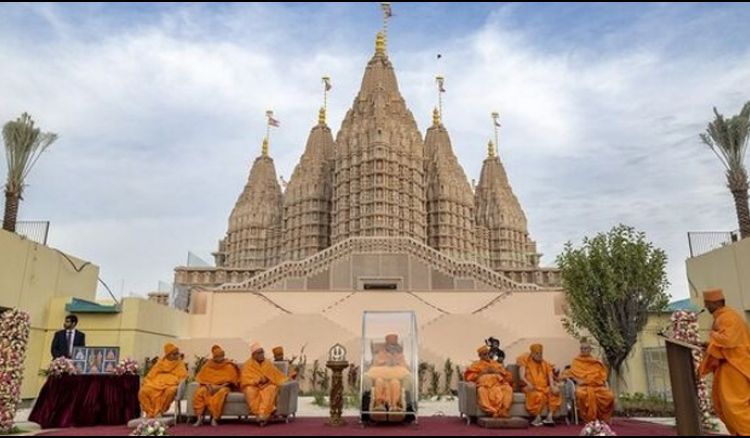On a momentous occasion marking the end of anticipation, the inaugural ceremony of the first Hindu temple in Abu Dhabi took place at 8 a.m. today. This landmark event signifies the emergence of the first Hindu temple in a Muslim-majority nation.
Today, the Prime Minister of India graced the occasion with his presence, unveiling the temple amidst a two-day state visit to the United Arab Emirates. It's noteworthy that yesterday, the Prime Minister held discussions with President Mohammed bin Zayed Al Nahyan, setting the stage for today's auspicious ceremony.
Spanning across 27 acres of land near Al Raha Beach in Abu Dhabi, the Swaminarayan Temple stands as a testament to cultural harmony and bilateral cooperation. The foundation stone for this monumental project was laid in 2019, with the land graciously donated by the UAE government. The construction costs amounted to approximately 800 crore rupees.
Crafted from rose-colored sandstone sourced from Rajasthan, India, the temple is a masterpiece crafted by artisans from Rajasthan and Gujarat who meticulously carved over 25,000 stones to create this architectural marvel. The intricate carvings narrate tales of ancient civilizations like Maya, Aztec, Egyptian, Arabian, European, Chinese, and African, alongside excerpts from the epic Ramayana.
Standing at a towering height of 108 feet, the temple boasts seven intricately crafted spires representing the seven Emirates. Surrounding the main sanctum, there is a serene water body symbolising the sacred rivers Ganga and Yamuna. Two central domes, named 'Unity Dome' and 'Peace Dome', adorn the temple entrance, welcoming devotees from all walks of life.
Within the sprawling temple complex, a prayer hall capable of accommodating around 3,000 devotees simultaneously serves as a spiritual haven. Additionally, amenities include a community centre, an exhibition hall, a library, and a children's park, catering to diverse needs beyond religious worship.
The inauguration of the Swaminarayan Temple marks a significant stride towards fostering cultural exchange and religious tolerance. Beyond its architectural grandeur, the temple stands as a symbol of unity, bridging cultures and communities in the spirit of mutual respect and harmony.
 বাংলায় পড়ুন
বাংলায় পড়ুন














